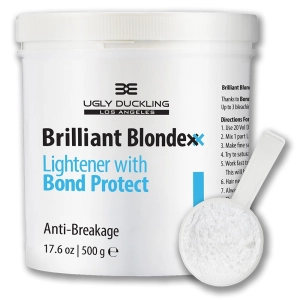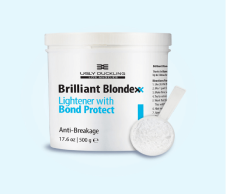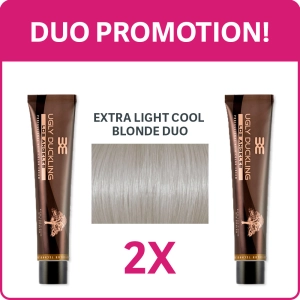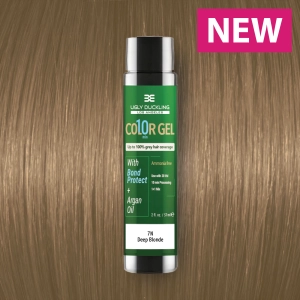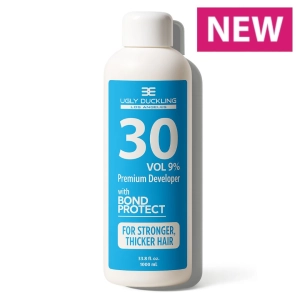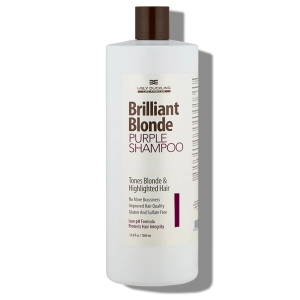Hair breakage and split ends are very common issues in the salon and for women generally.
In this blog article, we will go through some of the causes, and what stylists and colorists can do to treat this and cure it.
Common Causes of Hair Breakage & Split Ends.
1. Genetics.
Clearly, genetics does play a role here. In particular, women with thinner, finer and also blonde hair will find that their hair is much more fragile than women with thicker, darker hair.
Curls also play a role here. Every time there is a naturally occurring curl in the hair there is basically a kink. And that kink is naturally more prone to breakage.
2. Hair Length
Whatever the underlying nature of the hair, the longer it is, the older the hair is going to be at the ends.
And that will mean that it will be prone to breakage and split ends.
As these days hair is tend to be worn long rather than short, this makes hair breakage and split ends a much more common issue that it was 10 or 20 years ago.
Don't forget, for a woman with shoulder-length hair, that hair at the ends is over 2 years old.
It's going to be weaker, with a cortex that is damaged and eroded as compared to the hair that is freshly growing out of the roots.
That's only natural.
3. Pollution & Diet
Free radicals are also another factor causing oxidative stress to the hair cells.
Pollution means that our body and hair are constantly exposed to these free radicals.
Bad chemicals which are unfortunately present in many meat, chicken and fish products due to antibiotics in the animal food chain also play a part.
Good diet will therefore help to a great extent.
Avoid processed foods: anything out of a bag, a can or a freezer pack.
Avoid eating animal products that have been fed organically.
Foods that are good for hair growth include those with protein, omega-3s, iron, biotin, and zinc.
Drink plenty of water.
3. Stress
Stress can cause hair breakage and a condition called telogen effluvium.
The stress of an urban lifestyle also makes matters worse - for our bodies and also for our hair.
Managing stress may therefore result in healthier hair.
4. Hair Dryers, Chemical Straightening, Heated Rollers
Now we come to some of the aggravating factors that we as women do to our own hair that makes matters worse.
Hair drying & chemical straightening would be right up there at the top of the list.
These processes can damage hair shafts and remove moisture from the hair, thus causing breakage.
5. Poor quality shampoos
Now we really start getting up-close and personal.
Professional hairdressers often insist on using professional hair care products rather than retail. And they are right.
But what they frequently forget to say is that those professional hair care products need to be acidic in almost all cases.
Acidic hair care products help close the hair cuticle - and prevent split ends and breakage.
Non-acidic hair care products open up the hair cuticle - and help make split ends and breakage issues worse.
It's as simple as that.
All Ugly Duckling hair care products are acidic. We simply would not make alkali hair care products unless there was a specific reason.
There can on occasion be specific reasons to create alkali products.
For example, "No tears" hair care products for small children by their very chemical nature need to be alkali.

6. Poor quality bleaches, unwise choice of developer strength
New stylists sometimes think that all bleaches are the same.
Experienced stylists know that this is not the case. And that there is a huge variation in the ability of a bleach to lift correctly without damage.
Using excessively strong developer strength (either because the bleach used is not good, or when people want to avoid using bleach altogether) is another reason for hair damage and breakage.
Ugly Duckling bleaches are designed to work very well with 20 Vol in most cases and 30 Vol only when the hair is really very dark.
We don't advise you to use 40 Vol apart from in truly the most extreme situations.
7. Elastic hair ties, Back combing
Elastic hair ties can cause hair breakage.
Elastic hair ties are a must-have for working out. Just be aware of that, and try and limit your use of very tight hair ties where possible.
Wear your hair down occasionally. And do try and make your up-do a little more loose!
8. Incorrect brushing and combing, back-brushing
Brushing and combing too much can cause hair breakage.
Don't brush 100 times a day. Don't forget that those ends are the most fragile and each time you brush you are weakening them.
Use combs with wide teeth where possible.
Avoid back-combing where possible.
Of course, if it is a special occasion and you absolutely need to do that for that seamless shadow root colro application, then go ahead.
We only live once, right?
How Can I Avoid Getting Hair Breakage When Bleaching & Coloring?
1. Use a good quality bleach & appropriate developer strength
We do recommend that you use Brilliant Blondexx with Bond Protect built in.
The Maleic Acid present in the bleach will prevent hair breakage and help make the hair stronger and more resistant to breakage and split ends.
The bleach also lifts very well. Which means you can use it with low volume developer.
20 or 30 Volume is enough in almost all cases. Never 40.
Meaning of course less damage.
It's so gentle that it can be used on the scalp area to lift very dark roots easily.
WATCH VIDEO OF HOW TO USE BLEACH WITH BOND PROTECT ON THE SCALP AREA
2. Avoid overlapping when applying bleach.
When you as a stylist apply bleach to (for example) the re-growth area, please be careful not to overlap onto hair which does not require bleaching.
By the way, if by chance you do overlap during the bleaching process, just wipe back with a damp cloth during processing and you should be OK.
WATCH VIDEO ON HOW TO AVOID BANDING & OVERLAPPING WHEN APPLYING BLEACH:
3. Use a quality toner
A good quality toner is just as important as a good quality bleach. Ugly Duckling makes a big range of toners, including very gentle toners without ammonia as well as stronger, lifting cream toners.
All of them do their job of color correction and tone correction very well without damage.
4. Use Bond Protect Treatment Products
Lastly, use Ugly Duckling's Bond Protect treatment range after bleaching and toning.
This range contains Bond Protect to strengthen the hair fiber and prevent hair breakage.
It is also acid based. Meaning that it helps close the hair cuticle and return it to a healthy position.
Meaning that you avoid split ends.
Using this range will help you to repair and fix hair breakage & help you prevent split ends also.
These products are sulfate-free and gluten free as well as being acid-based.
You should find a very significant improvement in hair breakage issues after using them.

